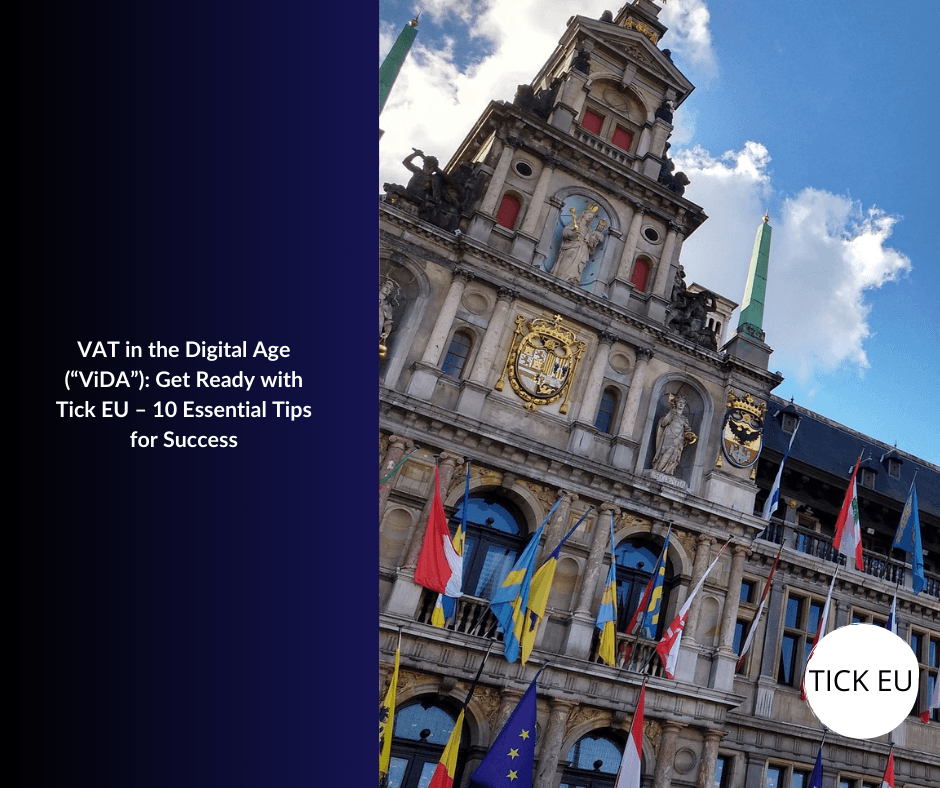VAT in the Digital Age (ViDA): 10 Key Insights to Help You Succeed with Tick EU
What is ViDA?
ViDA is a set of tax reforms that will change how VAT operates in the European Union.
Why is it important?
ViDA is the biggest change to EU VAT rules since the introduction of the single market in 1993. Its goal is to reduce VAT revenue loss and modernize the VAT system, making it simpler, more efficient, and suited for the digital age.
How will businesses be affected?
ViDA will change how businesses operating in the EU charge, invoice, report, and manage VAT. Companies will need to share data with customers and EU tax authorities in near real-time.
When will these changes take effect?
ViDA will be implemented in stages from 2025 to 2035.
What are the key changes?
ViDA introduces changes in three main areas:
- E-invoicing and digital reporting: Businesses will need to issue e-invoices in the EN16931 standard and report data in real-time.
- Platform economy: New rules for platforms facilitating short-term accommodation rentals and passenger transport.
- Single VAT Registration (SVR): Businesses will be able to register VAT in one EU member state and manage their VAT obligations across the EU via a single portal.
What are the key deadlines?
- 2025: Start of domestic e-invoicing in EU member states.
- 2027: First phase of OSS expansion, including electric vehicle charging.
- 2028: Introduction of SVR.
- 2030: Platform economy changes must be implemented.
- 2035: Full harmonization of e-invoicing and digital reporting across the EU.
What challenges are expected?
In the short term, a key challenge will be implementing e-invoicing and digital reporting in multiple EU countries. In the medium term, businesses will need to update their VAT governance frameworks, operational processes, ERP systems, and integrate new requirements with teams in tax, legal, finance, IT, and logistics.
How does ViDA fit into the broader context of tax, customs, and legal reforms?
ViDA is part of global efforts to reduce tax revenue loss and modernize regulatory frameworks. In the EU, this is complemented by initiatives like CESOP, DAC7, customs reforms, and regulations covering data protection, artificial intelligence, digital markets, and digital services.
How should businesses prepare for ViDA?
We recommend a 5-step approach:
- Kick-off workshop: Organize a workshop to understand the potential impact on your business.
- Impact assessment: Identify key VAT risks.
- Gap analysis: Redesign VAT management, including e-invoicing and digital reporting.
- Business case: Prepare a business case and select the right technology tools.
- Implementation and monitoring: Implement the changes and monitor VAT risks.
Why partner with Tick EU for ViDA preparation?
Tick EU offers a unique combination of VAT expertise. Our team will help you understand ViDA’s impact on your business and support you in successfully implementing these changes.


